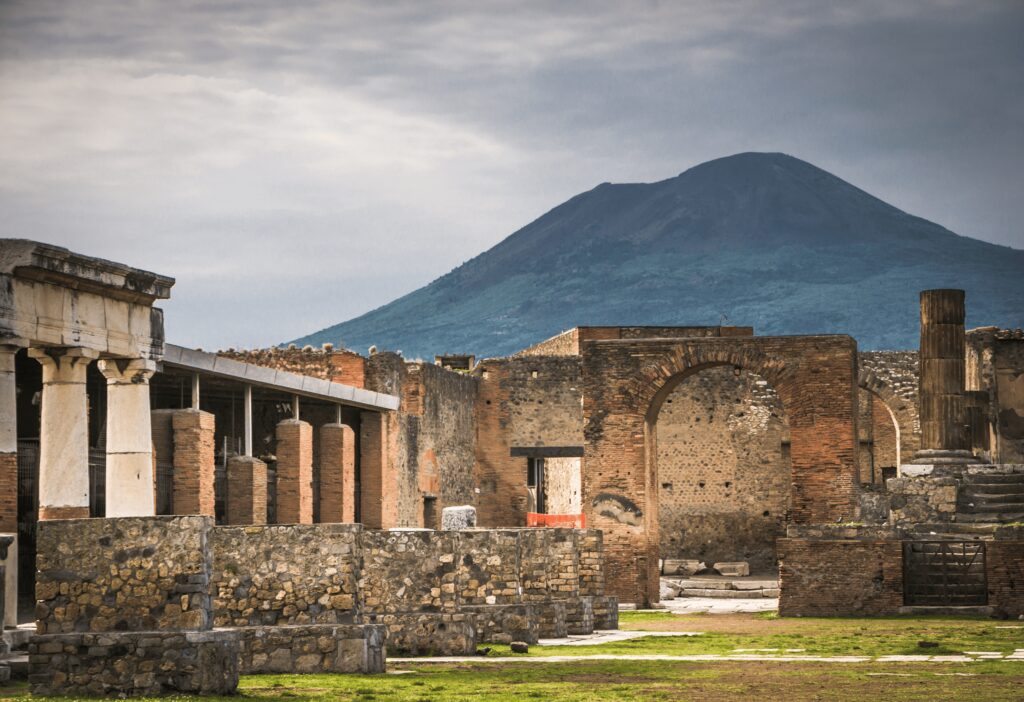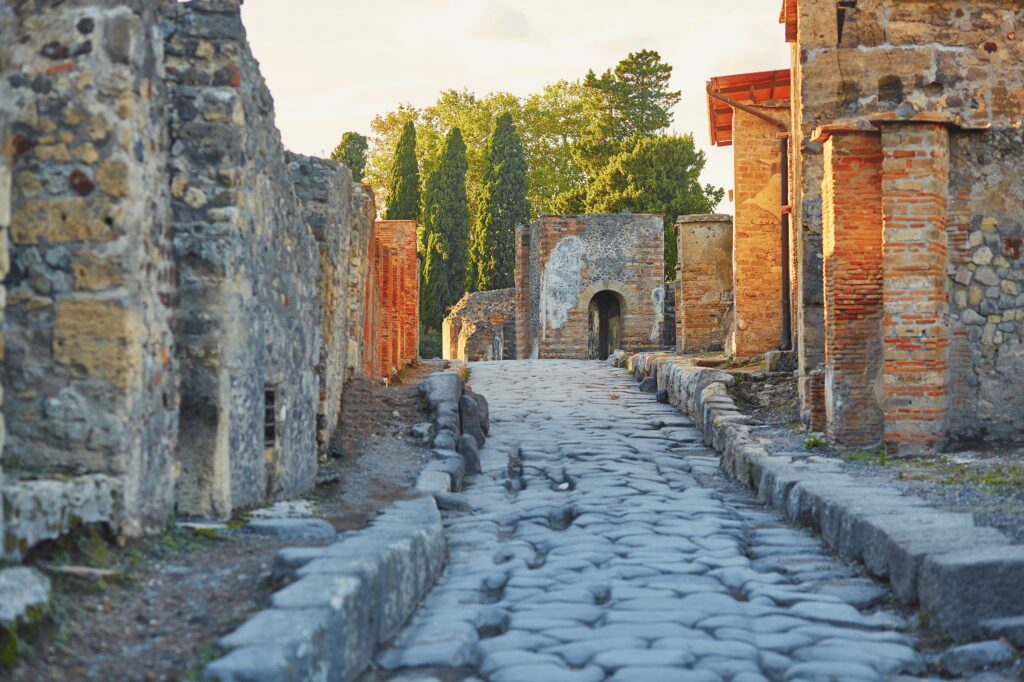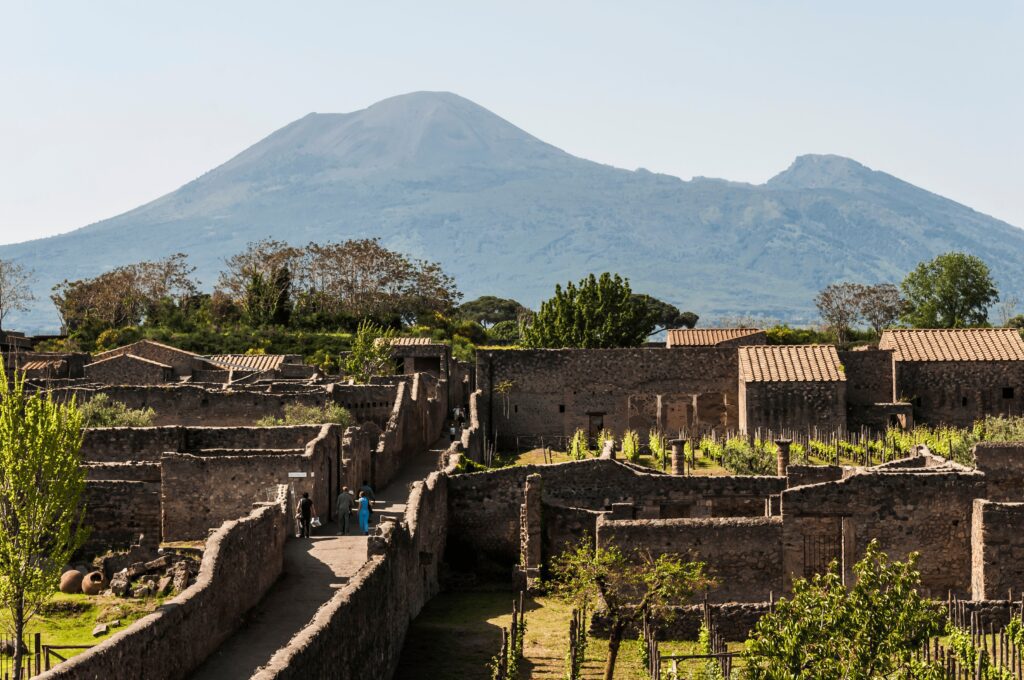Lost Roman cities continue to captivate historians, archaeologists, and enthusiasts alike. The allure of buried urban landscapes, waiting to be revived from the sands of time, fuels ongoing explorations. In 2025, significant archaeological finds promise to shed light on these ancient civilizations.
Key sites include:
- London’s Roman Amphitheatre: A venue for gladiatorial contests revealing insights into public life in Londinium. The gladiators who fought there were not just entertainers but also a reflection of the complex social system of the time.
- Pompeii: Buried under volcanic ash, offering a snapshot of life before disaster struck. This site is renowned for its well-preserved Roman roads, which served as vital arteries for trade and military movement across the empire.
This article dives into the fascinating world of Rediscovering Lost Roman Cities: Archaeological Finds of 2025. Readers will gain an understanding of historical contexts, notable discoveries, advancements in excavation techniques, and the enduring legacy of Roman civilization. We will explore various aspects such as art and culture in ancient Rome, which thrived from 753 BC to 476 AD marked by remarkable artistic expressions heavily influenced by earlier Greek and Etruscan traditions. We will also delve into the influence of Roman mythology on modern culture, showcasing how these ancient tales continue to shape our societal norms and political aspirations today. Prepare to uncover the mysteries that lie beneath our feet.
The Historical Context of Roman Cities
The Roman civilization, which thrived from 753 B.C. to A.D. 476, laid the groundwork for urban planning that continues to influence modern cities. This ancient society left a legacy marked by architectural innovations and sophisticated infrastructure.
Key Features of Roman Cities
Some key features of Roman cities included:
- Grid layouts: Cities were often designed on a grid, facilitating efficient movement and organization.
- Public spaces: Forums, temples, and baths served as centers for social interaction, commerce, and governance.
The Role of Trade and Commerce in Urban Development
Urban development was intricately linked to trade and commerce. Roman cities became vibrant hubs where goods flowed from various regions across the empire. Trade routes expanded the reach of local markets, leading to economic growth and cultural exchange.
Notable Aspects of Trade in Roman Cities
Some notable aspects include:
- Road systems: An extensive network of roads connected cities, promoting trade efficiency and military movement.
- Ports and harbors: Coastal cities flourished as trading posts, playing pivotal roles in maritime commerce.
These elements contributed to the dynamics of daily life in Roman cities. The interaction among diverse populations enriched cultural experiences, fostering advancements in art, literature, and technology.
The Significance of Legal Codification
The Twelve Tables, created between 451-450 BCE, marked a significant milestone in the development of Roman law and legal history. This codification of complex legal practices not only shaped the legal landscape but also reflected the societal values of the time.
Agriculture’s Role in Economic Growth
Agriculture also played a crucial role in Rome’s economic growth. It was more than just a means of sustenance; it was a driver of economic growth and social development during the Republic and Empire.
As we explore archaeological finds in 2025, understanding how urban planning and commerce shaped not only the physical landscape but also the social fabric of Roman civilization becomes essential. Notable figures such as Scipio Africanus, known for his role in establishing Rome’s dominance over Carthage during the Second Punic War, also played a significant part in shaping this history.
Furthermore, the religious practices during this era were not merely beliefs but a comprehensive system that intertwined with every aspect of their lives. These practices served as a cornerstone of Roman identity, influencing politics, culture, and social structures as explored in our article on Ancient Roman religion.
With these foundations established, we can now delve into notable archaeological sites unveiled in 2025.

Notable Archaeological Sites Unveiled in 2025
London’s Roman Amphitheatre, a remarkable relic of ancient Londinium, provides critical insights into the city’s historical significance. Established in the early 2nd century AD, this amphitheatre served as a venue for gladiatorial contests and public spectacles, showcasing the entertainment culture of Roman Britain. Its strategic location within Londinium facilitated access for citizens and visitors alike, highlighting the city’s role as a bustling hub of trade and social interaction.
Key Features Unveiled by Recent Excavations
Recent excavations have unveiled key features that enhance our understanding of this monumental structure:
- Entrance Tunnel: The discovery of the entrance tunnel offers a glimpse into how spectators accessed the arena. This passageway not only served practical purposes but also contributed to the dramatic entry of gladiators, setting the stage for thrilling contests.
- Arena Walls: Excavations revealed well-preserved sections of the arena walls, which provide evidence of the architectural techniques used by Romans. These walls were designed to accommodate large crowds, reflecting the amphitheatre’s capacity to host grand events.
The amphitheatre’s preservation as a protected monument allows modern visitors to explore these findings, deepening their appreciation for Roman London’s vibrant history. Such discoveries underscore the importance of ongoing archaeological efforts in 2025, revealing layers of urban life that continue to shape our understanding of ancient civilizations.
The Significance of Roman Engineering Feats
This amphitheatre is not just a site of entertainment but also a testament to incredible Roman engineering feats that changed the world. The architectural prowess demonstrated in structures like this amphitheatre played a significant role in shaping contemporary infrastructure systems.
Exploring the Birth of the Roman Republic
Moreover, understanding the socio-political backdrop during its establishment can be enriched by exploring the birth of the Roman Republic, which marked a critical shift from monarchical rule to a republican system around 509 BCE. This transition is essential for grasping the complexities of Roman governance and its enduring impact on modern political structures.
The Influence of Patricians in Ancient Rome
Additionally, it’s important to recognize that such monumental structures were often commissioned and maintained by the patricians, the wealthy and powerful elite of ancient Rome. Their influence extended beyond architecture into various facets of Roman life, marking them as masters of luxury and power during this era.
Advancements in Archaeological Techniques for Uncovering Roman Cities
Modern technologies are changing the way archaeology is done, especially when it comes to finding lost Roman cities. These new tools make excavation methods better, allowing archaeologists to discover the fascinating history hidden within ancient urban areas.
Key Technologies Transforming Archaeology:
1. GIS Technology (Geographic Information Systems):
- Facilitates detailed mapping of archaeological sites.
- Allows researchers to analyze spatial relationships between different artifacts and structures, providing insights into urban planning and land use in Roman cities.
2. AutoCAD:
- A powerful tool for drafting and designing archaeological plans.
- Enables accurate digital representations of excavated sites, enhancing documentation and interpretation of findings.
These tools create a synergy between traditional excavation techniques and innovative technology. For instance, GIS technology is being applied extensively at sites like Pompeii, where it aids in visualizing and reconstructing the city layout before the catastrophic eruption of Mount Vesuvius. By overlaying modern maps with ancient data, researchers can identify previously unknown structures and pathways.
The integration of such technologies not only streamlines the excavation process but also enhances collaboration among archaeologists. Data collected through these sophisticated methods can be shared globally, fostering a community approach to uncovering and preserving Roman heritage.
As these tools continue to evolve, they promise to unveil new chapters in the story of ancient Rome, enriching our understanding of its cities and their significance in shaping modern urban life.
The exploration of these ancient cities also provides invaluable insights into various aspects of Roman life. For instance, understanding the structure of power during the Roman Republic reveals how governance evolved from monarchy to a complex political structure, laying the groundwork for modern democracies.
Moreover, delving into the legal status of Roman women uncovers a complex interplay of rights and restrictions that significantly influenced gender dynamics in ancient Rome. This intricate legal framework highlights how women’s citizenship was intrinsically linked to their relationships with men.
Furthermore, the Roman army, a symbol of military power, played a crucial role in the growth and upkeep of the Roman Empire. Its structure and operational effectiveness were key in achieving victories across large areas.
Lastly, understanding the lives of plebeians, the common people of ancient Rome, is essential for grasping the social dynamics of Rome. They represented the majority and significantly influenced the development of political and economic structures.
These multifaceted explorations into Roman history not only enrich our understanding but also underscore the importance of preserving these ancient urban landscapes for future generations.

Future Prospects for Archaeological Discoveries in Roman Cities
Anticipated discoveries in 2025 promise to shine a light on the complexities of urban life in ancient Rome. Ongoing excavations across various sites are expected to reveal:
New Artifacts: These findings may include everyday items, coins, and tools that provide insight into the daily lives of Roman citizens. For instance, daily life in ancient Rome varied greatly among different social classes, which could be further understood through these artifacts.
Infrastructure Insights: Discoveries related to roads, aqueducts, and public buildings could illustrate the engineering prowess of Roman civilization. Such insights might also shed light on the legal frameworks that governed these infrastructures, as Roman law has played a crucial role in shaping modern legal systems.
Cultural Artifacts: Objects related to religious practices or leisure activities may enrich our understanding of social dynamics. The entertainment aspect of ancient Rome was significant, with activities such as gladiatorial games and chariot races being central to their societal structure. This aspect of entertainment in Ancient Rome could be explored further through newly discovered cultural artifacts.
The significance of these discoveries extends beyond mere curiosity. By examining new artifacts, archaeologists can construct a more nuanced picture of how Romans lived, worked, and interacted. Preservation efforts play a crucial role in this process. Protected sites allow researchers to study layers of history without damaging existing structures.
For instance, advancements such as GIS technology facilitate meticulous mapping of excavation sites. This precision enhances documentation and offers a platform for collaborative research among historians and archaeologists.
As excavation efforts continue, each artifact holds the potential to unravel stories from the past. The dialogue between these discoveries and ongoing preservation initiatives ensures that future generations will have access to an authentic glimpse into ancient urban life.
With each find, we gain deeper insights into not just the grandeur of Roman cities but also their everyday realities—making the pursuit of these archaeological treasures vital for understanding our shared history. The Men of Pompeii website serves as an ultimate online resource dedicated to the fascinating world of Ancient Rome, providing engaging content that brings the past to life for enthusiasts and scholars alike.
The Importance of Archaeology in Understanding Roman Civilization
Archaeology is essential for understanding human history, including the legacy of Roman civilization. In Rediscovering Lost Roman Cities: Archaeological Finds of 2025, we see how archaeology helps us learn about the Romans in several ways:
1. Gaining Insights into Roman Culture
Through excavations, we can uncover details about the daily lives, social structures, and economic activities of ancient Romans. This information provides valuable insights into how they lived and thrived.
2. Preserving Our Shared Heritage
Discoveries made through archaeology serve as reminders of our collective past. They highlight the importance of protecting these sites so that future generations can also appreciate them.
3. Inspiring Curiosity and Engagement with History
The findings from archaeological digs spark curiosity among both scholars and the general public. They encourage people to actively engage with history, whether through research or visits to historical sites.
As archaeologists continue their search for lost cities, each new discovery deepens our understanding of Roman civilization’s legacy. This ongoing exploration not only adds richness to historical narratives but also fosters a greater appreciation for our interconnected cultural heritage.

The Rise and Fall of the Roman Empire: A Story of Influence
The rise and fall of the Roman Empire is a testament to its profound and enduring impact on Western civilization. From its humble beginnings as a small settlement along the Tiber River in 753 BC, Rome grew into one of history’s most powerful empires.
This journey through time encompasses more than just conquest and expansion; it also narrates a tale of innovation, culture, and governance that has left an indelible mark on the world.
The Influence of Greek Philosophy on Roman Thought
Furthermore, the influence of Greek philosophy, particularly Stoicism, on Roman thinking further demonstrates the empire’s intricate cultural fabric. These philosophical ideas gained popularity within Roman society, shaping the beliefs and actions of significant thinkers throughout the empire.
FAQs (Frequently Asked Questions)
What are the key archaeological sites related to lost Roman cities discovered in 2025?
In 2025, notable archaeological sites include London’s Roman Amphitheatre, which showcases the historical significance of gladiatorial contests in Londinium. These discoveries highlight the architectural and cultural dynamics of Roman urban life.
How has modern technology impacted the rediscovery of Roman cities?
Advancements in archaeological techniques, such as GIS technology and AutoCAD, have transformed how archaeologists uncover lost Roman cities. These tools enhance excavation methods, allowing for more precise mapping and analysis of ancient urban layouts.
What role did trade play in the development of Roman cities?
Trade and commerce were pivotal in shaping the dynamics of Roman cities. They facilitated economic growth, influenced urban planning, and contributed to the cultural exchange that defined the Roman civilization.
What can we expect from future archaeological discoveries related to Roman cities?
Future prospects for archaeological discoveries in Roman cities include new artifacts that reveal complexities of urban life. Ongoing excavations are anticipated to deepen our understanding of ancient societal structures and daily activities.
Why is archaeology important for understanding Roman civilization?
Archaeology plays a crucial role in rediscovering lost aspects of Roman civilization. Through excavations and findings, we gain insights into their urban planning, cultural practices, and historical significance, enriching our knowledge of history.
How do recent finds contribute to our understanding of ancient urban life in Rome?
Recent archaeological finds from sites like London’s Roman Amphitheatre provide valuable information about social interactions, entertainment practices, and architectural innovations. These insights help us piece together the complexities of daily life in ancient Rome.

